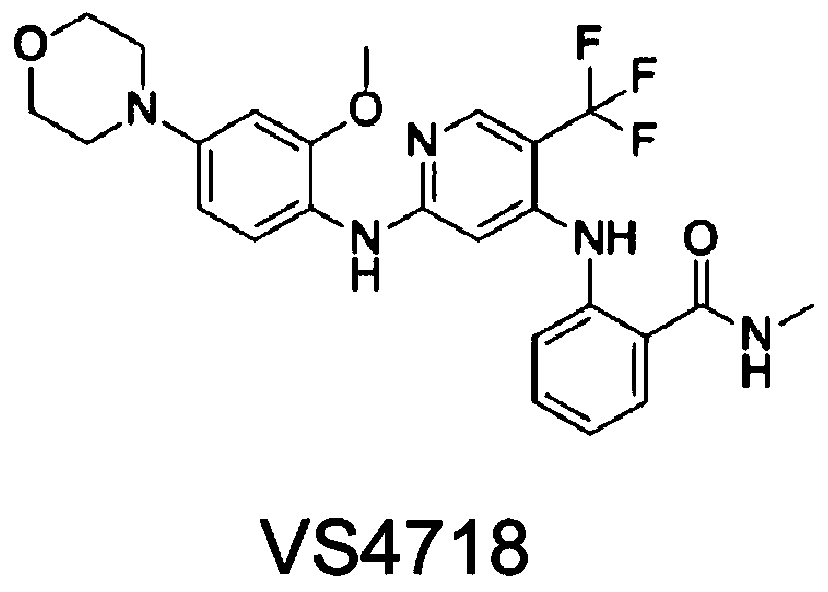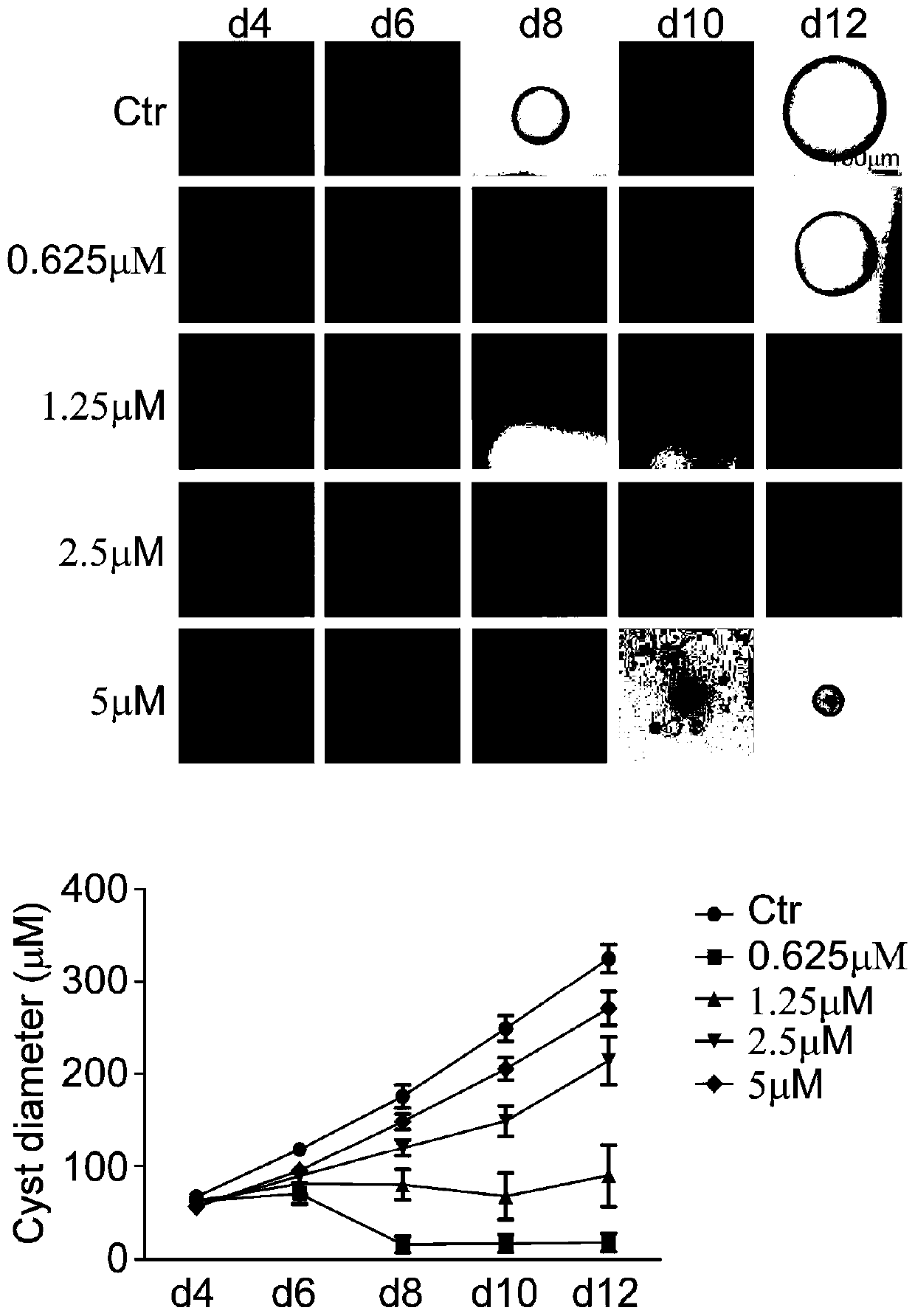Application of FAK (focal adhesion kinase) inhibitor in treatment of autosomal dominant polycystic kidney disease
A dominant inheritance, autosomal technology, applied in urinary system diseases, organic active ingredients, medical preparations containing active ingredients, etc.
- Summary
- Abstract
- Description
- Claims
- Application Information
AI Technical Summary
Problems solved by technology
Method used
Image
Examples
Embodiment 1
[0036] Vesicle growth inhibition experiments were performed.
[0037]Canine kidney cells (Madin-Darby canine kidney cells, MDCK) were cultured in three-dimensional Matrigel (Purecol Collagen, Inamed Biomaterials Fremont Company, Cat. No. 5409) in vitro. The culture medium 1 used was to add three-dimensional Matrigel, HEPES, penicillin and streptomycin obtained the three-dimensional matrigel concentration of 2.9mg / ml, HEPES concentration of 10mM, penicillin concentration of 100U / ml, streptomycin concentration of 100μg / ml culture solution, pH 7.4. Culture solution 2 is a culture solution with FBS concentration of 10% and forskolin concentration of 10 μM by adding FBS and forskolin (FSK, forskolin, Sigma company, product number F6886) to DMEM / F12 culture solution. DMEM / F12 culture solution It is a liquid obtained by mixing equal volumes of DMEM medium (Invitrogen Company of the United States, catalog number 12100-046) and F12 medium (Invitrogen Company of the United States, catal...
Embodiment 2
[0040] In the evening of the first day, C57BL / 6 mice over 6 weeks old (Experimental Animal Center, Peking University Health Science Center) were mated with males and females in the same cage at a ratio of 1:1. The plug indicates that the female mouse has been pregnant for half a day. The mice without the vaginal plug are divided into cages first, and then closed in the cage at night, and then observed on the second day; the pregnant female mice are fed alone for 13 days, and the transwell plate is used for the embryonic kidney on the 13th day (Corning Company, Cat. No. 3401) for cultivation.
[0041] The 13.5-day-old mouse embryonic kidney was taken and placed in the upper chamber of the transwell, and DMEM culture solution containing 8-Br-cAMP (Sigma Company, product number B-5386) with a final concentration of 100 μM was added to the lower culture well for cultivation. Under the action of cAMP, multiple and progressively growing renal vesicles will be formed in the kidney ti...
Embodiment 3
[0044] The mice used were obtained as follows: the Pkd1 flox / flox Mating of mice and Ksp-Cre mice to obtain a generation of Pkd1 + / - ; Ksp-Cre mice, Pkd1 + / - ; Male mice and female mice of Ksp-Cre mice were mated to obtain wild-type mice Pkd1 + / + ; Ksp-Cre and Pkd1 flox / flox ; Ksp-Cre mice (PKD mice). Among them, Pkd1 flox / flox The genetic backgrounds of mice and Ksp-Cre mice are both C57BL / 6 mice, both of which are recorded in the literature (...Wang W, Li F, Sun Y, et al. Aquaporin-1 retards renal cyst development in polycystic kidney disease by inhibition ofWnt signaling. FASEB J. 2015;29(4):1551-1563.). Pkd1 flox / flox The mice are mice obtained by knocking out the Pkd1 gene specifically for the whole kidney in the background of C57BL / 6 mice, so that the mice will develop rapidly progressive ADPKD after birth, and the mice can survive for about 7 years after birth. -About 10 days, genetic identification is carried out on the first day after the birth of the mouse to ...
PUM
 Login to View More
Login to View More Abstract
Description
Claims
Application Information
 Login to View More
Login to View More - R&D
- Intellectual Property
- Life Sciences
- Materials
- Tech Scout
- Unparalleled Data Quality
- Higher Quality Content
- 60% Fewer Hallucinations
Browse by: Latest US Patents, China's latest patents, Technical Efficacy Thesaurus, Application Domain, Technology Topic, Popular Technical Reports.
© 2025 PatSnap. All rights reserved.Legal|Privacy policy|Modern Slavery Act Transparency Statement|Sitemap|About US| Contact US: help@patsnap.com



